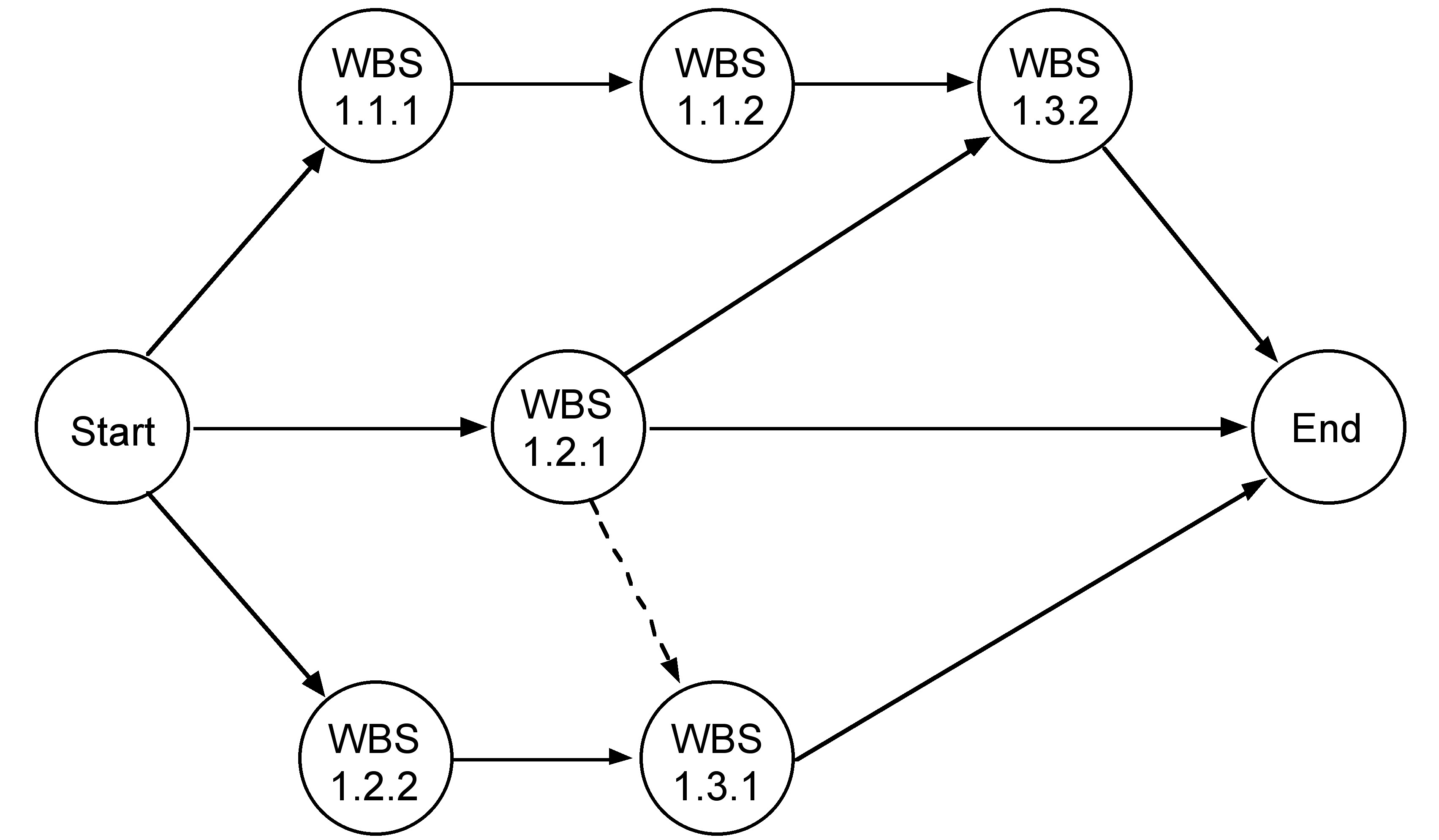| << Chapter < Page | Chapter >> Page > |
In our wedding planner example, Sally would look for relationships between tasks and determined what can be done in parallel and what activities needed to wait for others to complete. As an example, [link] shows how the activities involved in producing the invitations depend on one another. Showing the activities in rectangles and their relationships as arrows is called a precedence diagramming method (PDM). This kind of diagram is also called an activity on node (AON) diagram.

Another way to show how tasks relate is with the activity-on-arrow (AOA). Although activity-on-node (AON) is more commonly used and is supported by all project management programs, PERT is the best-known AOA-type diagram and is the historical basis of all network diagramming. The main difference is the AOA diagram is traditionally drawn using circles as the nodes, with nodes representing the beginning and ending points of the arrows or tasks. In the AOA network, the arrows represent the activities or tasks ( [link] ).

All network diagrams have the advantages as showing task interdependencies, start and end times, and the critical path (the longest path through the network) but the AOA network also has some disadvantages that limit the use of the method.
The three major disadvantages of the AOA method are:
In our case study it is clear that Steve and Susan have resource problems. Getting a handle on all of the tasks that have to be done is a great start, but it’s not enough to know the tasks and the order they come in. Before you can put the final schedule together, you need to know who is going to each job, and the things they need available to them in order to do it!
 We’ve got so much to do! Invitations, catering, music... and I’ve got no idea who’s going to do it all. I’m totally overwhelmed.
We’ve got so much to do! Invitations, catering, music... and I’ve got no idea who’s going to do it all. I’m totally overwhelmed.
From this statement it is clear that Susan is worried about human resources. In comparison, Steve realizes that not all resources are people!
 And it’s not just people! We need food, flowers, a cake, a sound system, and a venue! How do we get a handle on this?
And it’s not just people! We need food, flowers, a cake, a sound system, and a venue! How do we get a handle on this?

Notification Switch
Would you like to follow the 'Project management' conversation and receive update notifications?